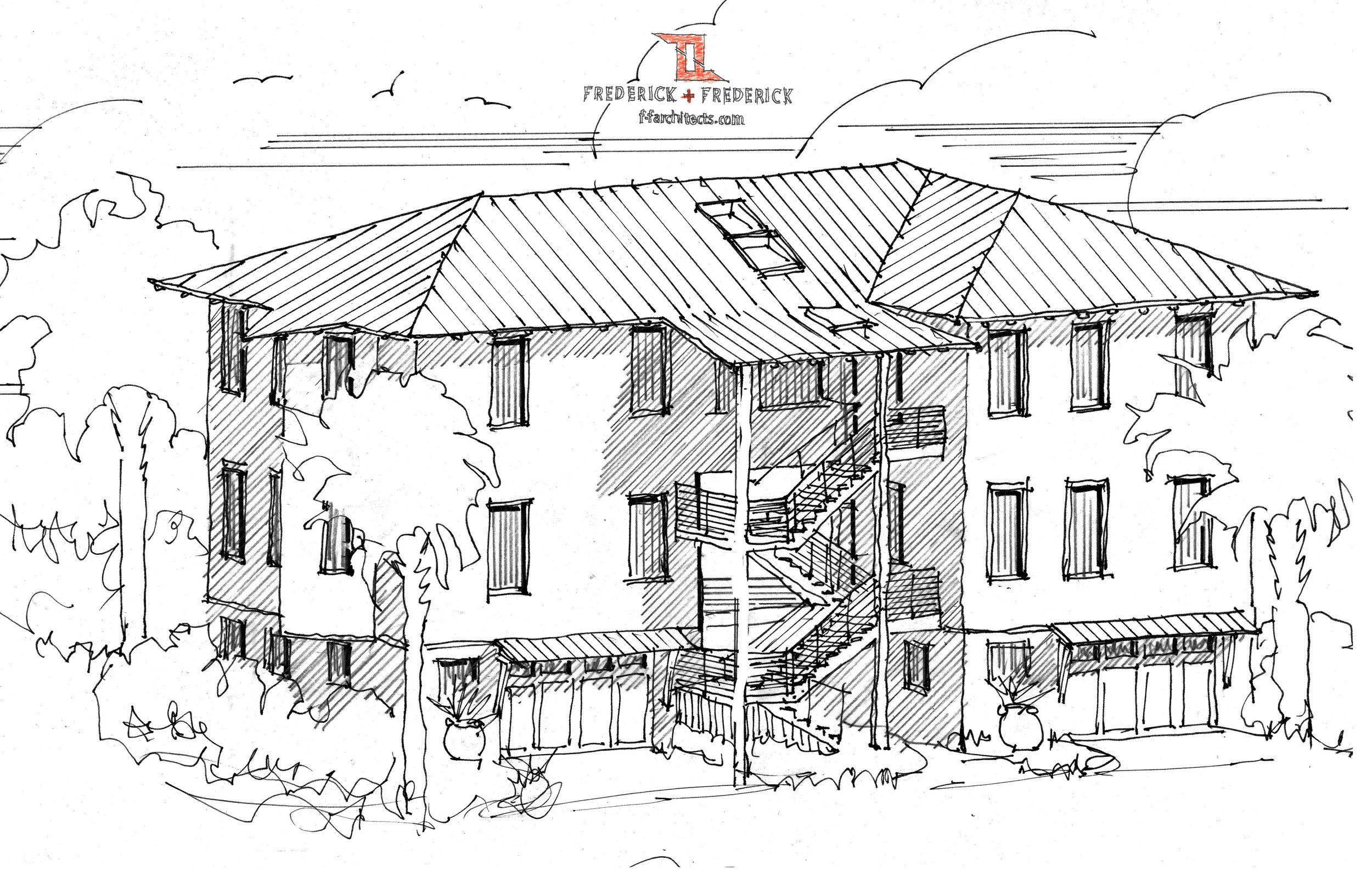Unbuildable Lots
Beaufort, like many coastal cities, has been experiencing high levels of development in recent years. There are less deep water, beachfront, or marsh view lots available now than there were when we started our firm. As a result, there are many lots that realtors and neighbors have given the bad reputation as being “unbuildable.” Here are a few case studies demonstrating how we’ve put in some extra effort to change that.
Setback Variances on a Beach Front Lot
In our first case, our client bought a Fripp Island beachfront lot years before environmental regulations were enacted that made the lot unbuildable. Beaufort County enacted a 50’ setback from the OCRM Baseline (the baseline is at the crest of the primary ocean front sand dune). Fripp Island has a 25’ setback from the front property line. On our client’s property, these two setback lines intersected, and the allowable buildable area was zero.
To be clear, our intention is never to flout environmental regulations, we are huge proponents of preserving our beloved Lowcountry. But could we find a way to build a resilient beachfront house on this unbuildable lot? Enter…the variance. The process can seem scary—all the red tape is intimidating—but taken step-by-step, it’s not so hard.
In this case, we had to get the first variance from the Fripp Island Architectural Review Board. The house needed to meet the minimum square footage requirements for the neighborhood, while also minimally encroaching on the front and rear setbacks. After a few revisions and back-and-forth communication, Fripp Island agreed to the concept and approved the setback variance.
Next, the Department of Environmental Services (formally the Office of Coastal Resource Management) needed to weigh in. We submitted a “Beachfront Notification for a New Habitable Structure,” including the conceptual design, site plan, survey, photographs, & project narrative. DES determined that the plan complies with the Coastal Zone Management Act, specifically because the house is less than 5000 square feet, the house is located as far landward as possible, no erosion control structure has been incorporated and the house is not being built on the primary oceanfront sand dune or seaward of the baseline.
The final step is to obtain the variance from Beaufort County’s Zoning Board of Appeals. A case must be made for the project where we argue that deviating from the Community Development Code will result in a hardship for the owner, and won’t negatively affect the neighborhood. A sign must be posted on the property, notifying the public of the variance request.
A public hearing is scheduled, where we present the project and make the case for the variance in front of the Zoning Board of Appeals and any interested members of the public. Once the Zoning Board of Appeals has approved the variance, the project can move forward.
This process was an investment, of both time and money, to achieve the desired outcome, but ultimately worth it to our client.
Septic Variance
Another lot we are working on right now (remember the Distant Island Peninsula house)
This is an incredible lot; it is close to town, surrounded by water & marsh on three sides, there is a tiny beach, a dock on deep water- it’s a dream! But for years, potential buyers passed it over. A realtor friend told us, “That lot is unbuildable! There’s nowhere to put the septic system!” Because it is a peninsula, there are setbacks on three sides of the lot, which significantly reduces the buildable area.
The Department of Environmental Services requires 75’ setback from the critical line at the marsh to the septic system and Beaufort County requires a 100’ setback. The reasoning is sound- who would want to potentially pollute the gorgeous and pristine creek? But is there a way to build a sustainable and non-polluting house on this incredible piece of land?
Our first thought was to investigate the possibility of getting the water authority to run sewer to the lot- this was not feasible. So- we would need to obtain permission from the Zoning Department of Beaufort County again.
We worked with a septic engineer to design a sophisticated on-site waste water treatment system that is monitored to ensure the safety and efficiency of the system. We hired a geotechnical engineer to prepare a soils report for the site. We prepared a submittal for Beaufort County’s Zoning Board of Appeals to review the variance request. The zoning administrator determined that the project could be seen by the staff review team, who granted approval to permit the engineered septic system.
With careful planning, patience, and knowledge of the regulatory systems, it is possible to build environmentally conscious houses on lots where the environmental regulations present an extraordinary burden.




